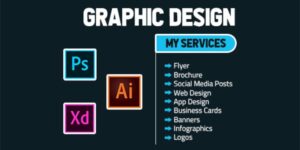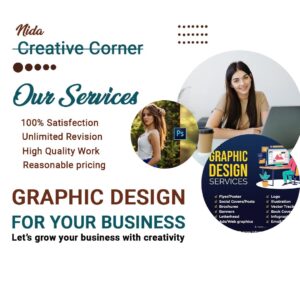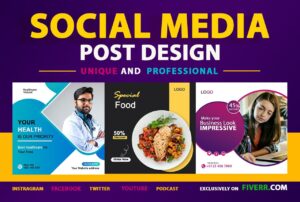Introduction to Graphic Design
Graphic design is a creative field that combines art and technology to communicate ideas visually. It involves creating visual content using typography, images, colors, and layout techniques to convey a message or evoke emotions. To excel in graphic design, you need a combination of technical skills, creativity, and a good understanding of design principles.

Learn the Basics
Start by learning the fundamental concepts of graphic design:
- Typography: Understand different font styles, spacing, and hierarchy.
- Color theory: Learn about color schemes, contrast, and how colors evoke emotions.
- Layout design: Study composition, balance, and visual hierarchy in layouts.
- Image editing: Familiarize yourself with tools like Adobe Photoshop, Illustrator, or Canva for editing and creating images.

Master Design Software
Become proficient in design software to bring your ideas to life:
- Adobe Creative Suite: Learn Adobe Photoshop for image editing, Illustrator for vector graphics, and InDesign for layout design.
- Sketch: Popular for UI/UX design, Sketch is a powerful tool for creating digital interfaces.
- Canva: A user-friendly tool for beginners with pre-designed templates and easy customization options.
Develop Your Creativity
Graphic design is a creative field, so nurture your creativity:
- Experiment with different styles: Try minimalism, vintage, abstract, or any other style to expand your creative horizons.
- Keep a design journal: Sketch ideas, collect inspirations, and jot down thoughts to fuel your creativity.
- Take on personal projects: Create designs for fictional brands or redesign existing logos to practice and showcase your skills.




















Understand Design Principles
Mastering design principles is crucial for creating impactful designs:
- Balance: Achieve visual balance using elements like color, size, and spacing.
- Contrast: Use contrast to highlight important elements and create visual interest.
- Alignment: Ensure elements are aligned properly for a cohesive and organized design.
- Proximity: Group related elements together to establish relationships and improve readability.
Study Visual Communication
Graphic design is about effectively communicating messages visually:
- Understand target audience: Tailor your designs to resonate with your target demographic.
- Use visuals strategically: Use images, icons, and infographics to enhance understanding and engagement.
- Tell a story: Design should have a narrative that guides the viewer through the content.
Stay Updated
Graphic design is constantly evolving, so stay updated with industry trends:
- Follow design blogs and websites: Stay informed about the latest design trends, tips, and techniques.
- Attend workshops and conferences: Networking with other designers and attending workshops keeps you inspired and updated.
- Engage with the design community: Participate in online forums, social media groups, and design challenges to learn and grow.
Build a Strong Portfolio
A well-curated portfolio showcases your skills and attracts clients or employers:
- Showcase diverse work: Include a variety of projects to demonstrate your versatility and expertise.
- Highlight key projects: Feature your best work prominently to grab attention.
- Keep it updated: Regularly update your portfolio with new projects and skills to reflect your growth.
Develop Business Skills
If freelancing or starting your own design business:
- Marketing: Learn about branding, digital marketing, and promoting your design services.
- Client management: Develop communication and negotiation skills for dealing with clients and projects.
- Pricing and contracts: Understand how to price your services competitively and create contracts that protect your work and rights.
Conclusion
Graphic design is a dynamic field that requires a combination of technical skills, creativity, and business acumen. By mastering design software, understanding design principles, nurturing creativity, staying updated with industry trends, and building a strong portfolio, you can develop a successful career in graphic design. Keep learning, experimenting, and pushing your creative boundaries to excel in this exciting field.


